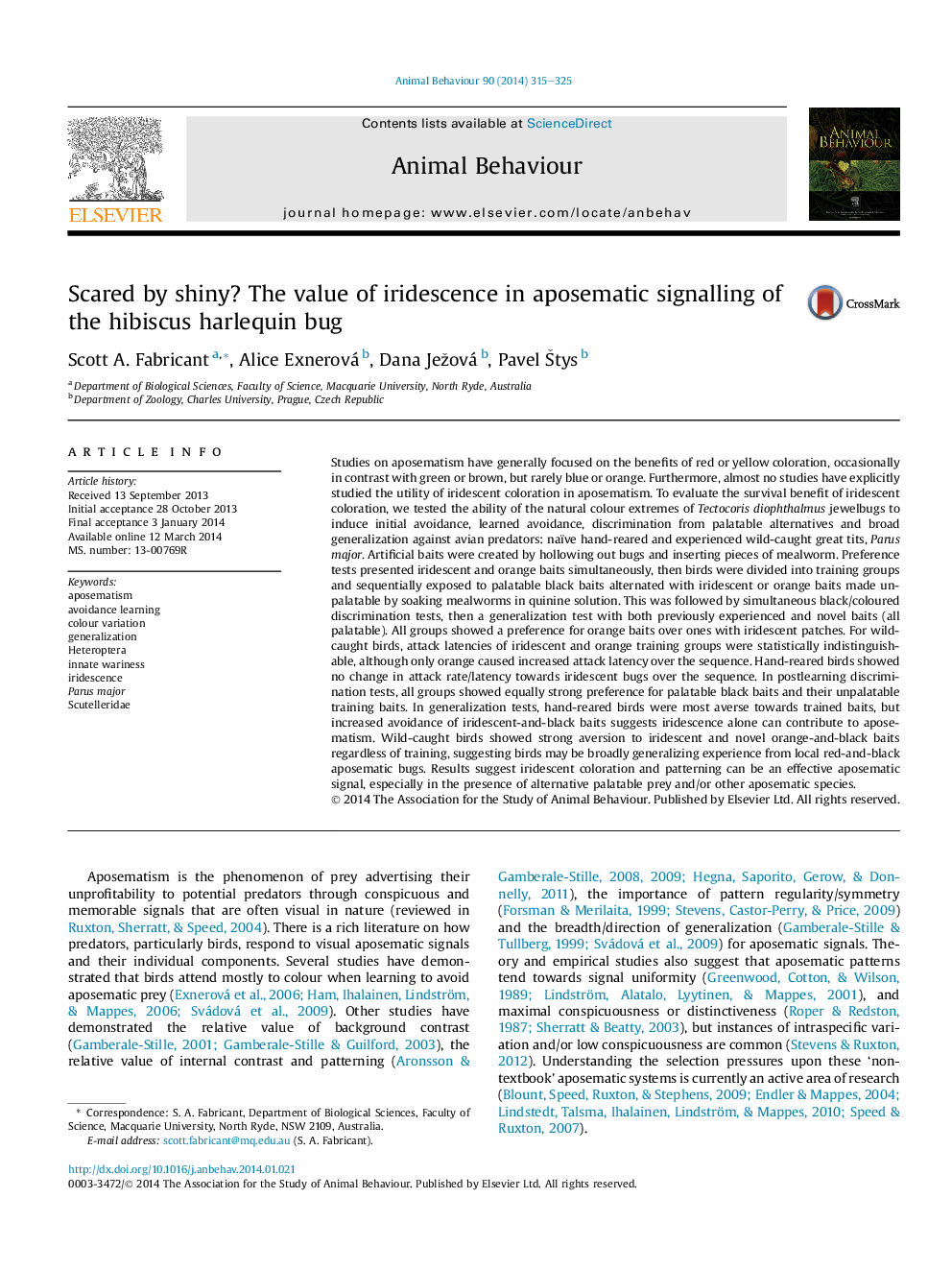| کد مقاله | کد نشریه | سال انتشار | مقاله انگلیسی | نسخه تمام متن |
|---|---|---|---|---|
| 2416403 | 1552238 | 2014 | 11 صفحه PDF | دانلود رایگان |
• First paper to test iridescence in predator wariness, learning and generalization.
• In initial preference tests, orange was preferred to iridescent bugs.
• Iridescence does not increase attack latency but equal to orange for discrimination.
• Naïve birds' generalization suggests iridescence is sufficient cue for avoidance.
• Wild-caught birds avoid iridescent blue and orange as they do red and black bugs.
Studies on aposematism have generally focused on the benefits of red or yellow coloration, occasionally in contrast with green or brown, but rarely blue or orange. Furthermore, almost no studies have explicitly studied the utility of iridescent coloration in aposematism. To evaluate the survival benefit of iridescent coloration, we tested the ability of the natural colour extremes of Tectocoris diophthalmus jewelbugs to induce initial avoidance, learned avoidance, discrimination from palatable alternatives and broad generalization against avian predators: naïve hand-reared and experienced wild-caught great tits, Parus major. Artificial baits were created by hollowing out bugs and inserting pieces of mealworm. Preference tests presented iridescent and orange baits simultaneously, then birds were divided into training groups and sequentially exposed to palatable black baits alternated with iridescent or orange baits made unpalatable by soaking mealworms in quinine solution. This was followed by simultaneous black/coloured discrimination tests, then a generalization test with both previously experienced and novel baits (all palatable). All groups showed a preference for orange baits over ones with iridescent patches. For wild-caught birds, attack latencies of iridescent and orange training groups were statistically indistinguishable, although only orange caused increased attack latency over the sequence. Hand-reared birds showed no change in attack rate/latency towards iridescent bugs over the sequence. In postlearning discrimination tests, all groups showed equally strong preference for palatable black baits and their unpalatable training baits. In generalization tests, hand-reared birds were most averse towards trained baits, but increased avoidance of iridescent-and-black baits suggests iridescence alone can contribute to aposematism. Wild-caught birds showed strong aversion to iridescent and novel orange-and-black baits regardless of training, suggesting birds may be broadly generalizing experience from local red-and-black aposematic bugs. Results suggest iridescent coloration and patterning can be an effective aposematic signal, especially in the presence of alternative palatable prey and/or other aposematic species.
Journal: Animal Behaviour - Volume 90, April 2014, Pages 315–325
